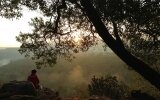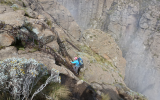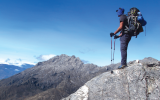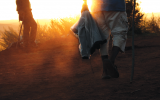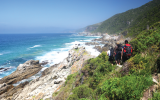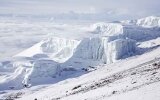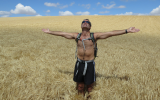- Magazine
- #readityourway
- Weekly Stories
- #shareyourstory
-
Adventure
- Abroad Travelling
- Africa Travelling
- Events
- Expos & Shows
- Festivals
- Fishing
- Free Diving
- Gliding
- Horse Riding
- Inspiring People
- Islands Travelling
- Kite/Windsurfing
- Motorbiking
- Motorised Water Sports
- Mountaineering
- Mountain Biking
- Off-road 4x4
- Off-road Motorbiking
- Paddling
- Performance Driving
- Photography
- Rock Climbing
- Rollerblading
- Sailing
- Scuba Diving
- Skateboarding
- Skydiving
- Snowboarding & Skiing
- Surfing
- Swimming
- Trail Running
- Wakeboarding
- Waveski Surfing
-
Sport
- Adventure Racing
- Fishing
- Free Diving
- Gliding
- Health & Fitness
- Horse Riding
- Inspiring People
- Kite/Windsurfing
- MMA
- Motorbiking
- Mountain Biking
- Multi-sport
- Off-road 4x4
- Off-road Motorbiking
- Paddling
- Performance Driving
- Photography
- Road Cycling
- Road Running
- Rock Climbing
- Rollerblading
- Sailing
- Scuba Diving
- Skateboarding
- Skydiving
- Snowboarding & Skiing
- Surfing
- Swimming
- Rugby
- Trail Running
- Triathlon
- Wakeboarding
- Waveski Surfing
- Lifestyle
- Calendar
Getting Ready for your Everest Base Camp Trek
Words, Photos & Video: Kobus Bresler
Topic:
Hiking
The thing to remember when travelling is that the trail is the thing, not the end of the trail. Travel too fast and you miss all you are travelling for.” Louis L’Amour
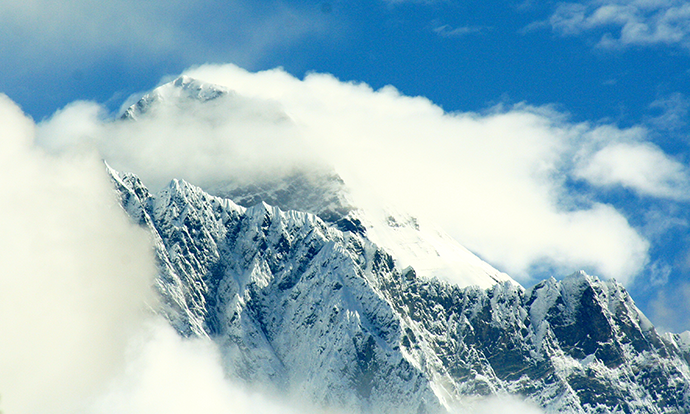
Nepal is an amazing country with a fascinating mix of cultures and religions. From the bustling capital city of Kathmandu to the small mountain villages where you are greeted by friendly and interesting people, who are happy to welcome you to their own little piece of paradise. Most visitors to Nepal are drawn by its natural features, none of which are more awe inspiring than the roof of the world, Mount Everest. And thousands of people from all around the globe visit the birthplace of Buddhism annually in the hope of catching a glimpse of this spectacular massif and all the other amazing peaks surrounding it.
Trekking to Everest Base Camp (EBC) has become more than just a slog to high-altitude exposure, sitting between rocks, dust and ice in the hope of clear weather for some of the most amazing photos you will ever take. It is a pilgrimage of self-discovery, and an exploration of a region and people that has no comparison. Due to the increasing number of visitors, the Everest region has become one of the richest in Nepal. All the villages are beautifully maintained and development is ongoing to accommodate all the foreigners on their own pilgrimage.
So what does it take to successfully complete the hike to EBC and how do you prepare for the journey?
After deciding to take on this journey, the first thing to do is start your research. The region offers much more than just the mountains, so if you have the time and budget it is well worth exploring all the attractions in the region, especially considering that you will have to fly halfway around the world to get there. You will need about 18 days to do the EBC trek comfortably, including enough time for acclimatisation. The required budget will depend on a number of factors, such as time of year, flight bookings, your choice of operator and the comfort level you would like to experience. Furthermore, you will need to consider what else you would like to do before and after the trek. Do your research well and be clear about your plans to avoid wasting time planning once you are there. Most operators are able to offer you tailored packages to suit your needs and budget.
There are a number of ways to get to EBC, but the most popular route requires a flight from Kathmandu to Lukla, where you will start your trek on foot. Lukla Airport is considered by many to be the most dangerous airport in the world and the landing is an event you most likely will not experience anywhere else in the world. However, the domestic pilots are highly experienced and you really are in good hands. The trek requires a lot of time on foot moving from village to village through pristine forest and along large, wild rivers. If nothing else, the scenery will keep you motivated to carry on and before you know it, your day is at an end. The environment changes drastically as you gain altitude, with each day giving you a unique experience.
An overall good level of fitness is required, as some days can get long, but you certainly do not have to be a super athlete to do the trek comfortably. All that is required is two to three months of good preparation, such as walking around your neighbourhood and going for hikes in your area. As the day goes on you will pass through the most amazing little villages where you can stop for a tea- or lunch break. This is a great time to rest the legs, put your pack down and catch your breath. The tea houses are all very good and serve up the most amazing dishes with very little to work with. Indulge as much as you can to keep your energy levels and spirit high, and enjoy the trek for what it really is; a journey instead of a destination goal. If you are a complete couch potato and are planning to take on the trek without any physical preparation, then you are in for a surprise (and not a good one either!). So the better prepared you are physically, the better your overall experience will be.
Before you start your preparations, it makes sense to consider what you will be taking on. You will be hiking nearly every day with one or two acclimatisation days built in. You will carry a pack every day, and although it will not be very heavy, it may be new to you. As you gain altitude, your body will have to work just a little harder to achieve results. If you take all of this into account, it becomes easier to plan your preparation. Plan exercise that you enjoy and that fits in with your current schedule. It is important that you DO something to get fitter and be more prepared. Lying on the couch won’t get you to EBC and back comfortably or enjoyably!
The real challenge of the trek is altitude and unfortunately, this is the one aspect you cannot truly prepare for. Our bodies handle the stress of depleted oxygen and low pressure differently, so there is no way of knowing until you get there, except if you have had a similar experience before. Medication is available to help your body cope with altitude-related problems, but most of these are only available on prescription. A visit to your doctor prior to departure is a good idea. Always tell your guide about any prescription and other medications you decide to use during the trek.
Watch out for Nepali tummy, as it will make your trip uncomfortable. Take the right medication with, and keep your hands and face clean. There is ample water and ablutions along the way, so all you need to do is remain disciplined. A small bottle of hand sanitizer will go a long way on a trip like this. Avoid eating red meat in the mountains and be sure to ask your guide for a local explanation of why this is important.
Having the correct equipment is extremely important. Kitting yourself out can be a costly exercise, but many operators have kit that you can rent. Don’t leave this to the last minute, shop around and get different opinions. Make sure you are comfortable with the kit you buy, as you will be using it. First on your shopping list should be the right boots and socks, so that you can wear the boots in during a few preparation hikes. Your chosen operator should be able to supply you with a detailed gear list to help you make informed decisions. During the trek, you can expect four seasons in a day, with temperatures ranging from very hot to freezing cold. Sleet, ice rain, snow and rain are but a few of the elements you will most likely encounter, but after a day on foot you can look forward to getting dry, comfortable and sorting out your equipment for the next day at a tea house.
There are many other aspects that form part of your preparation, but I’ve touched on the most important ones. What is more important than anything else is researching and booking your trip. Afford yourself the opportunity to visit and explore this incredible region and meet its wonderful people.
Interesting facts:
1. Everest has two base camps on opposite sides of the mountain. The camp on the north side is in Tibet, at an altitude of 5,150m. The more popular trekking option is on the southern side in Nepal, at an altitude of 5,380 m.
2. Base camp on the southern side is visited by thousands of people annually, and as a result the Everest region is one of the richest in Nepal.
3. Base camp north provides road access, but in the south supplies are carried in by porters.
4. The best time to attempt the trek is from March to mid-May and from mid-September to November. The rest of the year is very wet with lots of rain and cloud obscuring many of the large mountain views.
5. Bottled water can be bought along the way if you are concerned about Nepali tummy. Staying hydrated is one of the best ways to support your body during acclimatisation.
6. The final stretch of the trek across the Khumbu Glacier changes every season due to the dynamic nature of the glacier and movement of the ice fall.
7. Everest is the highest mountain in the world at an altitude of 8,848 m.
8. The cost of your trek can vary between US$800 and US$3,000, depending on all the variables. This excludes flights, taxes and visas.
Issue:
Issue 22 Feb'13
Contributor:
Kobus Bresler

